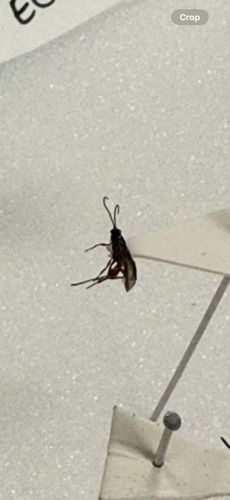Braconid Wasp
Scientific Name: Braconidae (numerous genera and species)
Order & Family: Hymenoptera, Braconidae
Size: Typically 1.5 mm to 15 mm in length, though some tropical species can be larger.

Natural Habitat
Highly diverse, found in almost all terrestrial habitats where their hosts are present, including forests, agricultural fields, grasslands, gardens, and urban areas.
Diet & Feeding
Adults may feed on nectar, honeydew, or pollen. Larvae are parasitoids, feeding on and developing inside or on the bodies of other insects, primarily caterpillars, beetles, aphids, and other insect larvae.
Behavior Patterns
Braconid wasps are solitary parasitoids. Females locate host insects (often using chemical cues), and lay one or more eggs on, in, or near the host. The wasp larvae then hatch and consume the host from the inside out, eventually killing it. Pupation may occur inside the host, on the host, or externally, often in cocoons.
Risks & Benefits
Generally beneficial insects. They are important natural enemies of many agricultural and forest pests, playing a significant role in biological control, thereby reducing the need for chemical pesticides. They pose no direct risks to humans as they do not sting defensively (females use their ovipositor for egg-laying, not defense).
Identified on: 9/19/2025